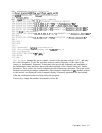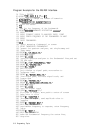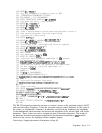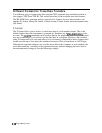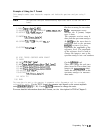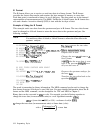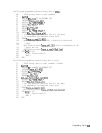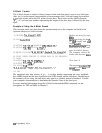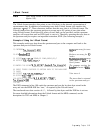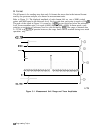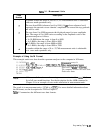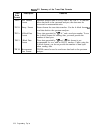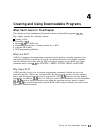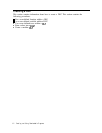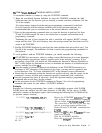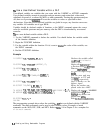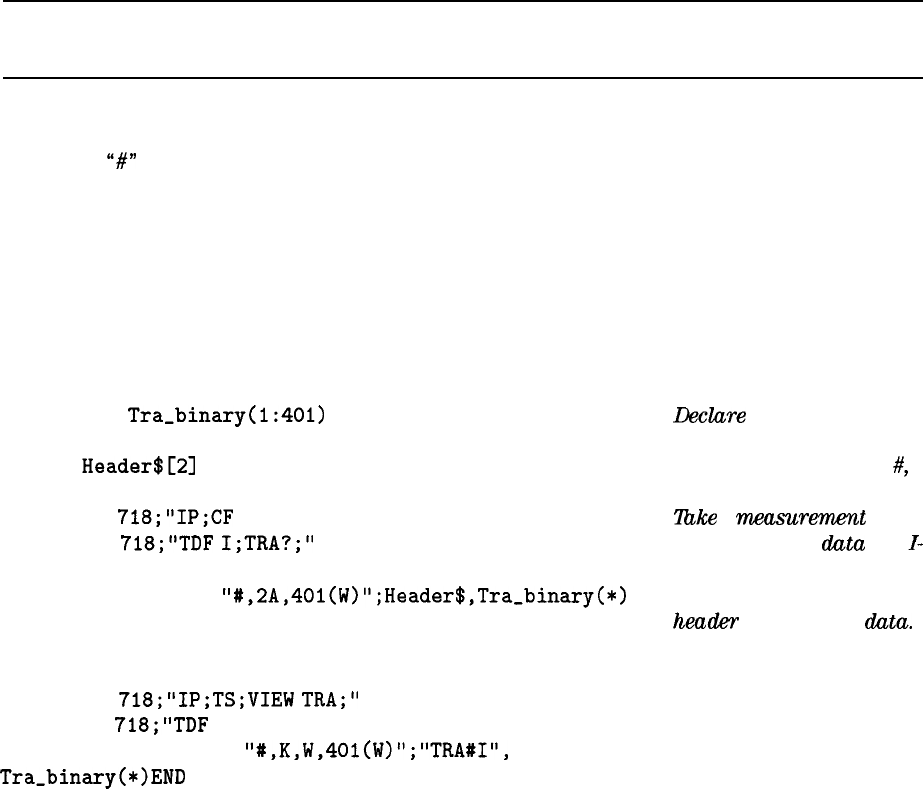
I-Block Format
Note
The I-block format is not recommended for use with the RS-232 interface
(Option 043).
The I-block format transfers data points as two 8-bit bytes in the internal representation of
measurement data. In addition to transferring trace data, I-block format also transfers the
characters
I‘#”
and “I”. These characters indicate that the trace data is in I-block format. The
I-block format allows the spectrum analyzer to accept up to 401 points of trace data when
using I-block format. Fewer than 401 points of trace data can be specified, and the spectrum
analyzer will accept data until an EOI signal is sent to it. Therefore, returning the trace data to
the spectrum analyzer requires an important instruction, END. (See following example.)
Example of Using the I-Block Format
This example sends trace data from the spectrum analyzer to the computer and back to the
spectrum analyzer in I-block format.
10 INTEGER
Tra_binary(l:401)
20 DIM
Header$[Z]
30 OUTPUT
718;"IP;CF
300MZ;SP 20MZ;SNGLS;TS;"
40 OUTPUT
718;"TDF
I;TRA?;"
50 ENTER 718 USING
"#,2A,40l(W)";Header$,Tra,binary(*)
60 PRINT "PRESS CONTINUE TO RETURN DATA TO THE ANALYZER"
70 PAUSE
80 OUTPUT
718;"IP;TS;VIEW
TRA;"
90 OUTPUT
718;"TDF
I;"
100 OUTPUT 718 USING
"#,K,W,401(W)";"TRA#I",
Tra-binary(*)
110 END
Dec.kzre
an array for trace
data.
Declare an array for
#,
I
header:
llzke a
mxxsurement
sweep.
Send trace A
data
in
I-
block format.
The computer receives the
header
and trace A
data.
View trace A.
The trace data is returned
to the spectrum analyzer
The END statement in line 100 sends the spectrum analyzer the last data byte stored in the
array and sets the HP-IB EOI line “true,”
as required by the I-block format.
The transferred trace data consists of #I, followed by data bytes until the EOI line is set true.
For more detailed information about the I-block format and the MDS command, see the
descriptions for TDF and MDS in Chapter 5.
Programming Topics 3-25



